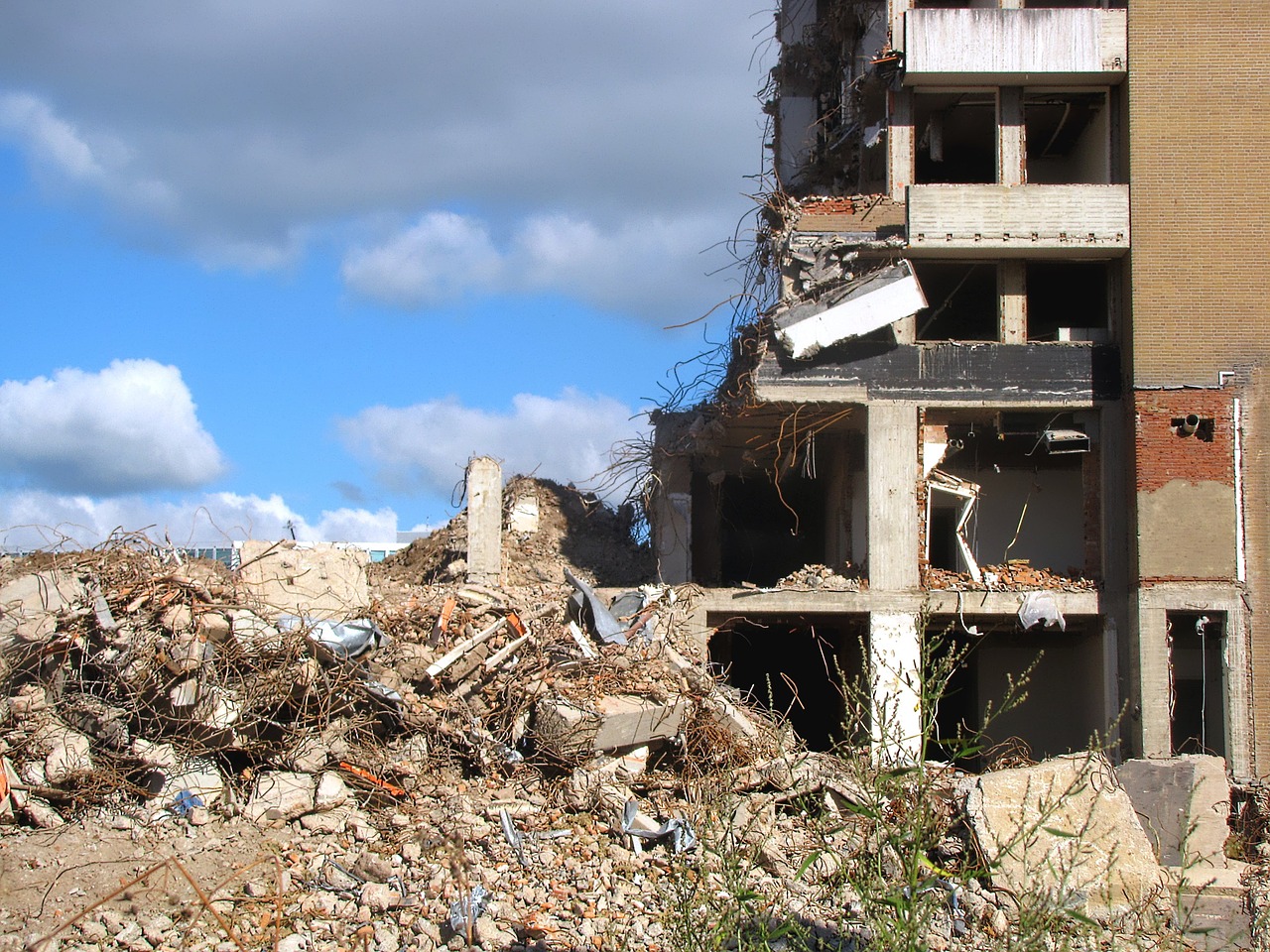Demolition safety
Contents |
[edit] Introduction
Health and safety is extremely important at all times. It is vital for construction industry professionals to review methods for maintaining safety in demolition.
[edit] Training
Construction workers should receive quality health and safety training. This is true for most industries, but it’s an important factor in many environments and should be vital for any individual using heavy machinery, equipment or leading a team.
When it comes to demolition, training is key. Anyone handling explosive and dangerous materials should know exactly what they are doing and be able to assess outcomes and potential hazards before the demolition. Having adequate training in this area will help to prevent serious accidents, which could be fatal - in particular if they are dealing with explosives.
The types of training individuals can receive for these types of jobs and environments are usually covered when receiving qualifications such as: IOSH, CITB, Working at Height, Risk Assessing and many others.
[edit] Wearing PPE is not an option
Most workers would not walk into a room full of dust and sand without the right equipment. Five-part PPE is standard for these types of situations and environments, which includes: Hard hat, high visibility vest, gloves, safety goggles and steel toe cap boots. In some cases, these items should be worn all time.
[edit] Ensuring the site is clean throughout
Keeping sites clean and safe throughout the entire process should be at the forefront of everyone’s mind - workers and site managers included. Having a clean site is standard amongst most health and safety regulations and should be implemented especially on demolition sites to ensure the safety of workers.
A safe site should ensure that every individual can access fresh drinking water and washing facilities as well as hot water and a clean and safe environment for cooking equipment. It's recommended to allocate storage space to prevent PPE from being over-worn or damaged.
[edit] Double checking during a final sweep
Before the actual demolition begins, it is a good idea to complete one final sweep throughout the entire building, in every room including any small storage areas, toilets, corridors and hallways. This will ensure that no one is left in the building and that every room is completely empty, even of furniture and other items.
During the demolition process, there should be an adequate number of workers securing the surrounding area. Their priority should be to make sure no one gets too close to the site once it starts being demolished, as this is a huge risk to health and safety.
This additional gate keeping of the site should include managing pedestrians and vehicles to ensure there is sufficient access for vehicles and walkways that do not interfere with the site. Keeping a one-way flow of traffic will prevent the need for any reversing of vehicles, which could cause problems if there isn’t a clear enough view for drivers to do so.
[edit] Post-demolition action items
After a building has been demolished, there is an incredible amount of debris; workers will need to cleanup and dispose of this debris properly. Wearing PPE during the cleanup stage is absolutely vital. With debris comes plenty of dust, sand and the potential for asbestos (although this should be removed before the site is demolished).
[edit] Related articles on Designing Buildings Wiki
- Asbestos.
- BREEAM Construction waste management.
- Construction dust.
- Deleterious materials.
- Demolition.
- Explosives.
- Filtering facepieces.
- Health and Safety.
- National Federation of Demolition Contractors NFDC.
- Personal protective equipment PPE.
- Recyclable construction materials.
- Site clearance.
- Site waste management plan.
Featured articles and news
Delivering for tenants; National Retrofit Hub
New report offers recommendations to strengthen energy efficiency standards to protect private renters.
Government consultations for the summer of 2025
A year of Labour, past and present consultations on the environment, the built environment, training and tax.
CMA competitiveness probe of major housing developers
100 million affordable housing contributions committed with further consultation published.
Homes England supports Greencore Homes
42 new build affordable sustainable homes in Oxfordshire.
Zero carbon social housing: unlocking brownfield potential
Seven ZEDpod strategies for brownfield housing success.
CIOB report; a blueprint for SDGs and the built environment
Pairing the Sustainable Development Goals with projects.
Types, tests, standards and fires relating to external cladding
Brief descriptions with an extensive list of fires for review.
Latest Build UK Building Safety Regime explainer published
Key elements in one short, now updated document.
UKGBC launch the UK Climate Resilience Roadmap
First guidance of its kind on direct climate impacts for the built environment and how it can adapt.
CLC Health, Safety and Wellbeing Strategy 2025
Launched by the Minister for Industry to look at fatalities on site, improving mental health and other issues.
One of the most impressive Victorian architects. Book review.
Common Assessment Standard now with building safety
New CAS update now includes mandatory building safety questions.
RTPI leader to become new CIOB Chief Executive Officer
Dr Victoria Hills MRTPI, FICE to take over after Caroline Gumble’s departure.
Social and affordable housing, a long term plan for delivery
The “Delivering a Decade of Renewal for Social and Affordable Housing” strategy sets out future path.
A change to adoptive architecture
Effects of global weather warming on architectural detailing, material choice and human interaction.
The proposed publicly owned and backed subsidiary of Homes England, to facilitate new homes.
How big is the problem and what can we do to mitigate the effects?
Overheating guidance and tools for building designers
A number of cool guides to help with the heat.
The UK's Modern Industrial Strategy: A 10 year plan
Previous consultation criticism, current key elements and general support with some persisting reservations.
Building Safety Regulator reforms
New roles, new staff and a new fast track service pave the way for a single construction regulator.



























